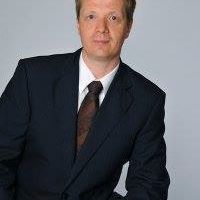Peter W Jungwirth
age ~55
from Wisconsin Rapids, WI
- Also known as:
-
- Peter William Jungwirth
- Peter Sarah Jungwirth
- Pete W Jungwirth
- William G Jungwirth
- Peter W Jungworth
- Phone and address:
-
4320 Oak Brook Ct, Wisconsin Rapids, WI 54494
(715)4247252
Peter Jungwirth Phones & Addresses
- 4320 Oak Brook Ct, Wisconsin Rapids, WI 54494 • (715)4247252
- 3310 44Th St, Wisconsin Rapids, WI 54494 • (715)4247252
- Wisc Rapids, WI
- Nekoosa, WI
- Wilmington, NC
- 4320 Oakbrook Ct, Wisc Rapids, WI 54494 • (715)4247252
Emails
Medicine Doctors

Peter S. Jungwirth
view sourceSpecialties:
Internal Medicine, Internal Medicine - Geriatrics
Work:
Peter S Jungwirth MD
15 Mareblu STE 350, Aliso Viejo, CA 92656
(949)4954524 (phone), (949)3899800 (fax)
Peter S Jungwirth MD
655 Camino De Los Mares STE 124, San Clemente, CA 92673
(949)6619767 (phone), (949)6611352 (fax)
15 Mareblu STE 350, Aliso Viejo, CA 92656
(949)4954524 (phone), (949)3899800 (fax)
Peter S Jungwirth MD
655 Camino De Los Mares STE 124, San Clemente, CA 92673
(949)6619767 (phone), (949)6611352 (fax)
Education:
Medical School
University of Oklahoma College of Medicine at Oklahoma City
Graduated: 1981
University of Oklahoma College of Medicine at Oklahoma City
Graduated: 1981
Conditions:
Abdominal Aortic Aneurysm
Acne
Acute Bronchitis
Acute Conjunctivitis
Acute Sinusitis
Acne
Acute Bronchitis
Acute Conjunctivitis
Acute Sinusitis
Languages:
English
French
French
Description:
Dr. Jungwirth graduated from the University of Oklahoma College of Medicine at Oklahoma City in 1981. He works in Aliso Viejo, CA and 1 other location and specializes in Internal Medicine and Internal Medicine - Geriatrics.

Peter Scott Jungwirth
view sourceSpecialties:
Internal Medicine
General Practice
General Practice
Education:
University of Oklahoma(1981)
Resumes

Peter Jungwirth
view sourceUs Patents
-
Method And Apparatus For Coordinating Uninterruptible Power Supply Modules To Provide Scalable, Redundant Power
view source -
US Patent:6396170, May 28, 2002
-
Filed:Mar 29, 2000
-
Appl. No.:09/537421
-
Inventors:Derek Laufenberg - Wauwatosa WI
Peter Jungwirth - Wisconsin Rapids WI
Joseph R. Wade - Mindoro WI -
Assignee:Powerware Corporation - Raleigh NC
-
International Classification:H02J 104
-
US Classification:307 64, 307 43, 307 52, 307 82, 363 71, 363142, 363 65
-
Abstract:Presented is a modular uninterruptible power supply system utilizing common power modules, and providing redundant coordinated control thereof. The system and method of the instant invention provides identical control logic within each of the individual power modules, thus dispensing with the requirement for a separate control module to control and coordinate the operating modes and parameters of the UPS system. A system is presented whereby a virtual master is established through an arbitration scheme at initialization of the UPS system. The master then assigns a virtual vice master to provide the redundant back up control should the virtual master no longer be able to perform its functions. Nearly simultaneous control of operational mode and state change functions is accomplished through a coordinated communications system including a high-speed communications bus and digital control logic lines. Also provided is a mechanism for removal of the virtual master from its duties upon the detection of a problem that is not detected by the virtual master itself.
-
Handheld Wireless Communication Device Keypad
view source -
US Patent:D541290, Apr 24, 2007
-
Filed:Jan 25, 2006
-
Appl. No.:29/252631
-
Inventors:Mark R. Swanson - Wisconsin Rapids WI, US
Peter William Jungwirth - Wisconsin Rapids WI, US
Jason Boon - Sun Prairie WI, US
John W. Grosz - Waupun WI, US -
Assignee:Renaissance Learning, Inc. - Wisconsin Rapids WI
-
International Classification:1402
-
US Classification:D14455
-
Handheld Wireless Communication Device
view source -
US Patent:D552606, Oct 9, 2007
-
Filed:Jan 25, 2006
-
Appl. No.:29/252642
-
Inventors:Mark R. Swanson - Wisconsin Rapids WI, US
Peter William Jungwirth - Wisconsin Rapids WI, US
Jason Boon - Sun Prairie WI, US
John W. Grosz - Waupun WI, US -
Assignee:Renaissance Learning, Inc. - Wisconsin Rapids WI
-
International Classification:1402
-
US Classification:D14346
-
Wireless Base Station
view source -
US Patent:D566115, Apr 8, 2008
-
Filed:Jan 25, 2006
-
Appl. No.:29/252646
-
Inventors:Mark R. Swanson - Wisconsin Rapids WI, US
Peter William Jungwirth - Wisconsin Rapids WI, US
Christina Miller - Sun Prairie WI, US
John W. Grosz - Waupun WI, US -
Assignee:Renaissance Learning, Inc. - Wisconsin Rapids WI
-
International Classification:1402
-
US Classification:D14358, D14240
-
Wireless Classroom System Allowing User To Access A Particular Classroom By Selecting Corresponding Network From A List Of Wireless Networks
view source -
US Patent:7502855, Mar 10, 2009
-
Filed:Jun 26, 2006
-
Appl. No.:11/474906
-
Inventors:Mark R. Swanson - Wisconsin Rapids WI, US
Peter William Jungwirth - Wisconsin Rapids WI, US
Dean A. Goodmanson - Port Edwards WI, US -
Assignee:Renaissance Learning, Inc. - Wisconsin Rapids WI
-
International Classification:G06F 15/173
-
US Classification:709225, 709219, 709229
-
Abstract:A wireless classroom response system includes multiple wireless networks, each serving a different classroom. Each network has a computer located proximate to the classroom that the wireless network serves. The computer executes a communications server and an application program, wherein the application program facilitates classroom activities. The system also includes a wireless access point located proximate to the classroom. The wireless access point is communicatively linked to the computer. The system also has a plurality of handheld units. Each handheld unit displays, to a user, a list of the networks, and receives a user input indicating which one of the wireless networks the handheld unit should connect. The handheld unit connects to the chosen wireless network, thereby becoming a node in the wireless network. It also transmits data to the application program via the wireless access point and the communications server.
-
Wireless Classroom Response System
view source -
US Patent:20060293048, Dec 28, 2006
-
Filed:Jun 27, 2006
-
Appl. No.:11/476230
-
Inventors:Mark Swanson - Wisconsin Rapids WI, US
William Moss - Wisconsin Rapids WI, US
Peter Jungwirth - Wisconsin Rapids WI, US
Dean Goodmanson - Port Edwards WI, US
Richard Dreher - Wausau WI, US
John Hickey - Wisconsin Rapids WI, US -
Assignee:Renaissance Learning, Inc. - Wisconsin Rapids WI
-
International Classification:H04Q 7/20
-
US Classification:455426100, 455422100
-
Abstract:A wireless classroom response system wireless network is located proximate to a classroom, a base station that coordinates the activities of the wireless network, and a plurality of handheld units. Each handheld unit is associated with an attendee of a class (either on a long-term or “owned basis, or on an ad-hoc or “shared” basis). Each handheld unit performs a discovery process that includes the steps of randomly choosing a wireless channel, attempting to discover the presence of the wireless network on the channel, and repeating these two steps if no wireless network is discovered.
-
Audience Response System And Method
view source -
US Patent:20060294552, Dec 28, 2006
-
Filed:Jun 26, 2006
-
Appl. No.:11/474838
-
Inventors:Mark Swanson - Wisconsin Rapids WI, US
William Moss - Wisconsin Rapids WI, US
Peter Jungwirth - Wisconsin Rapids WI, US -
Assignee:Renaissance Learning, Inc. - Wisconsin Rapids WI
-
International Classification:H04N 5/44
G06F 13/00
H04N 7/18
G06F 3/00
H04N 5/445 -
US Classification:725080000, 725081000, 348734000, 725039000
-
Abstract:An audience response system is provided. In various implementations, the response system includes a base station, handheld units, and a wireless network. The response system may have a prompted mode and an unprompted mode of operation. In the prompted mode of operation, the base station transmits questions to the handheld units over the wireless network. The questions are displayed to users on their handheld units. The users respond to the question, and their responses are transmitted to the base station via the wireless network. In the unprompted mode, answer templates are transmitted and displayed to the users, with the actual questions being conveyed in some other manner, such as verbally or by written handout.
-
System For Detecting Markings
view source -
US Patent:20090232419, Sep 17, 2009
-
Filed:Mar 11, 2009
-
Appl. No.:12/401988
-
Inventors:Mark R. SWANSON - Wisconsin Rapids WI, US
Donald K. Zahrte - Necedah WI, US
Peter William Jungwirth - Wisconsin Rapids WI, US -
Assignee:Renaissance Learning, Inc. - Wisconsin Rapids WI
-
International Classification:G06K 9/20
-
US Classification:382321
-
Abstract:A marking detection system detects markings on a printed medium, such as pencil markings in bubbles on the printed medium. The marking detection system includes a circuit board with a plurality of components thereon, including an optical subsystem and an electronic subsystem including circuitry. The marking detection system further includes a shroud for optically isolating a plurality of emitting and detecting elements of the system.
Classmates

Niles East High School, S...
view sourceGraduates:
Leslye Crodgen (1964-1968),
Clayton Voegtle (1957-1960),
Linda Italia (1968-1972),
Peter Jungwirth (1966-1970)
Clayton Voegtle (1957-1960),
Linda Italia (1968-1972),
Peter Jungwirth (1966-1970)

Peter Jungwirth
view sourceFriends:
Silvio Pilz, Carina Dujlovic, Benjamin Aigner, Florian Karrer

Peter Jungwirth Austria
view source
Peter Jungwirth
view source
Peter Jungwirth
view source
Search Names Pete Jungwirth
view sourceYoutube
Googleplus

Peter Jungwirth

Peter Jungwirth
Flickr
Get Report for Peter W Jungwirth from Wisconsin Rapids, WI, age ~55








